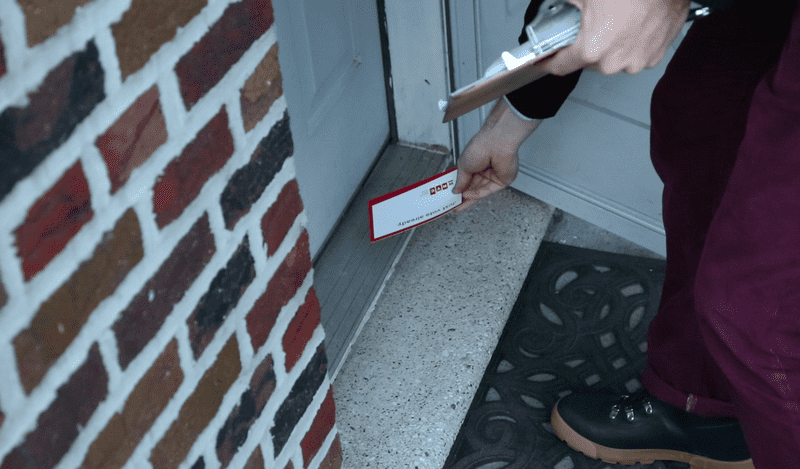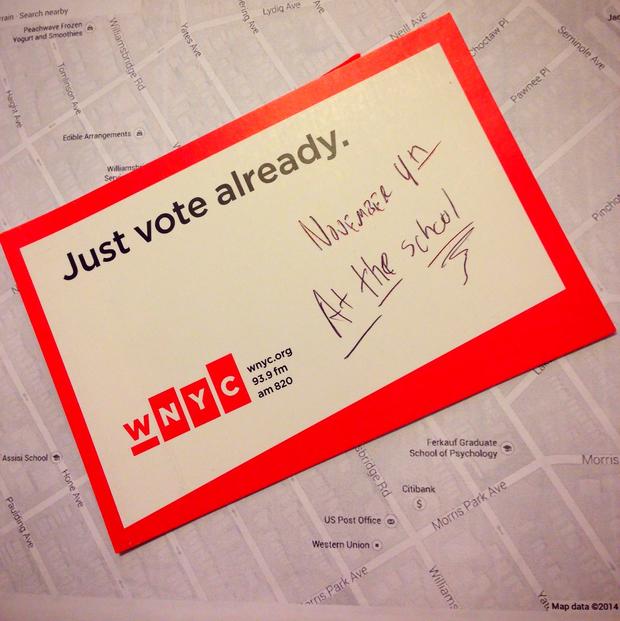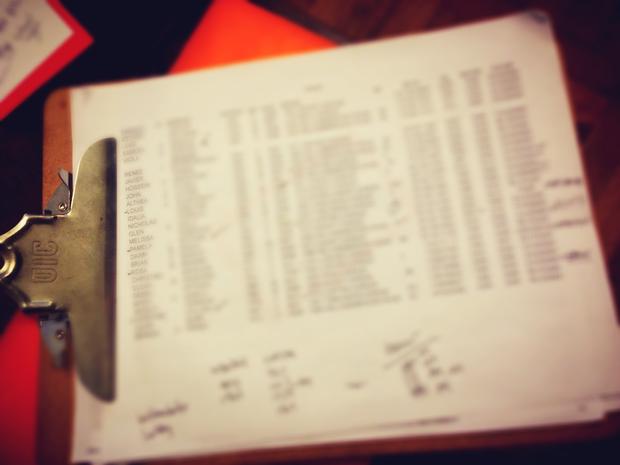
Find out how the door-knocking went on the Brian Lehrer Show.
As our designated Donna Brazille meets Karl Rove meets overworked volunteer, I’ll be taking the “Just Vote Already” campaign to registered nonvoters in the Morris Park area of the Bronx. Kio Stark and the Data News team have been compiling information and talking to political insiders; and recently on the Brian Lehrer Show, we talked to a few campaign vets to get practical advice about how to target voters -- and actually get them to the polls. Here's a few of the things we learned, which we’ll be putting to use:
√ Don’t let voters know they are too special. Yes, every campaign (even ours!) uses data to target voters and prioritize how they'll spend their money and energy campaigning. But walking up to someone and saying “Hey, you really matter, much more than your neighbor” might come off as a little overbearing.
√ You're not that funny. We learn this lesson over and over. This is about as funny as our campaign advisors think we should get. Basically, "public radio funny."
√ Social pressure is huge. Call it community mindedness, call it guilt -- in the end, people vote mostly because others around them are doing so (or because they think others are). Everything you do to encourage voting should remind people that their friends and loved ones are counting on them. So, for instance, our “robocall a friend” project would be most effective if we actually said “Hi Nancy, your friend Bob is counting on you to vote…” We’re working on that technology…
√ Knock the right way. Seriously, one of our campaign operatives told us that a closed-fist, knuckles-first, rhythmic knock is best. It’s friendly, it’s casual, and it’s most likely to lead to someone actually opening the door. I’ve been practicing.
√ Help people develop a voting day plan. It’s one thing to convince someone to vote, another to get them to the polls on election day. A useful tactic is to help them develop a plan for that day -- Do you know where your polling place is? Who’s going to give you a ride there? What time of day are you going to vote? Visualization works for pro athletes, why not voters.
√ Hand out literature. When you're not really advocating for a candidate, your literature can be pretty sparse. Below, our super-on-message flyer. In the white space, I'm asking people to write down where and when they will vote (see the whole "develop a plan" thing above).
√ Track your contacts. Campaigns use their data to find who to target, then continually revisit and refine that data, tracking every interaction. Ideally, every key voter gets a few different kinds of contacts -- mailings, robocalls, live calls, a house visit, etc. There are even apps to help campaigns track door-to-door visits. I’ll be using the more low-tech spreadsheet-and-marker method, containing names, addresses, and when they last voted -- as well as whether they answered our robocall.
So those are our methods we'll be putting to good use. Remember, you can get in on the act by sending a robocall to a friend.
Below, listen to how it went, from the Brian Lehrer Show.
And vote, for crying out loud.


